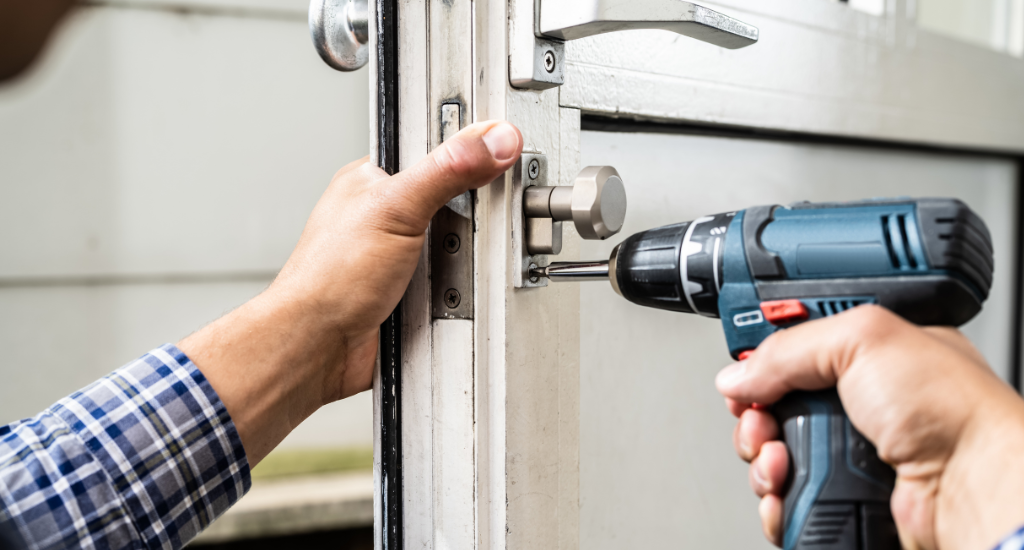Locks play an essential role in securing our homes, offices, and belongings. From padlocks to deadbolts, cylinder locks to electronic keypad systems, each type of lock serves to safeguard our property and provide peace of mind. However, like any mechanical device, locks require regular maintenance to ensure they function optimally and maintain their security integrity over time.
In this article, we will delve into the world of lock maintenance, discussing key components, the importance of maintenance, DIY practices, professional services, preventive measures, and creating a maintenance schedule.
Understanding Locks and Their Components
Before we jump into the maintenance procedures, let’s briefly explore the anatomy of locks and their key components. Locks come in various types, including padlocks, deadbolts, knob locks, lever locks, and cylinder locks. While the specifics of each type might differ, the fundamental principles remain the same.
A typical lock consists of several key components, such as the keyway, pins, springs, and bolts. The keyway is the channel where the key is inserted, guiding it to interact with the pins inside the lock. These pins are designed to match the cuts on a specific key, allowing them to align and permit the lock to open. Springs provide tension to the pins, while bolts extend into the door frame, preventing the door from opening when the lock is engaged.
The Significance of Lock Maintenance
Lock maintenance is not just a matter of convenience; it’s a critical practice that ensures the security and functionality of your locks. Neglecting lock maintenance can lead to malfunctions, jammed locks, and compromised security. By performing regular maintenance, you can extend the lifespan of your locks, prevent potential failures, enhance security, and save money by avoiding costly replacements.
Key Lock Maintenance Practices
| Regular Cleaning | The first step in lock maintenance is to keep the lock clean. Dust, dirt, and debris can accumulate inside the lock mechanism, affecting its performance. Use a soft brush or compressed air to remove particles from the keyway and other components. For stubborn dirt, a mild cleaning solution can be used with caution. Ensure the lock is completely dry before using it again. |
| Lubrication | Proper lubrication is crucial for smooth lock operation. Choose a lubricant specifically designed for locks, avoiding oil-based products that can attract dust. Apply a small amount of lubricant to the key and insert it into the lock, then rotate the key to distribute the lubricant evenly. Lubricate other moving parts, such as the bolt and latch, as well. |
| Inspection | Regularly inspect your locks for signs of wear, rust, or corrosion. Rust can cause pins and springs to seize, leading to a lockout situation. If you notice any signs of rust or deterioration, consider addressing the issue promptly. |
| Testing | Periodically insert and rotate the key to test the lock’s functionality. The key should turn smoothly without any resistance or sticking. If you encounter difficulties, it’s an indication that maintenance is needed. |
| Rekeying and Professional Maintenance | Rekeying involves changing the combination of pins inside the lock so that existing keys no longer work. This practice is recommended when you move to a new place or need to revoke access for previous keyholders. Additionally, consider seeking professional locksmith services for complex maintenance tasks, such as repairing damaged locks or performing a comprehensive lock inspection. |
DIY vs. Professional Maintenance
While some basic lock maintenance tasks can be performed as DIY projects, more complex tasks require the expertise of a professional locksmith. Simple tasks like cleaning, lubrication, and basic inspections can be managed by homeowners. However, rekeying, repairing severely damaged locks, or dealing with electronic lock systems are areas where professional assistance is crucial. Locksmiths have the knowledge and tools to handle intricate lock mechanisms effectively.
Tips for Preventing Common Lock Issues
✔ Avoid using excessive force when inserting or turning the key. Forcing a key can bend or break it, and it can also damage the lock’s internal components.
✔ Always use the correct key for the corresponding lock. Using the wrong key can damage both the key and the lock.
✔ Keep your keys clean and in good condition. Dirty or damaged keys can cause issues when inserting or turning them in the lock.
✔ Protect your locks from harsh weather conditions. Rain, snow, and extreme temperatures can lead to rust and corrosion.
✔ Educate family members or residents about proper lock usage. Make sure everyone understands the importance of gentle key insertion and turning.
Creating a Lock Maintenance Schedule
Establishing a regular maintenance schedule is key to ensuring your locks remain in optimal condition. The frequency of maintenance depends on factors such as the lock’s usage, exposure to weather conditions, and overall wear and tear. Set reminders to clean, lubricate, and inspect your locks at appropriate intervals. By consistently following a maintenance routine, you’ll minimize the chances of encountering lock-related issues.
Secure Peace of Mind Through Diligent Lock Maintenance
Lock maintenance is a fundamental practice that safeguards the security of your property while ensuring the functionality and longevity of your locks. Regular cleaning, lubrication, inspections, and occasional professional maintenance are essential steps to take. By adopting these practices and educating yourself about proper lock usage, you can maintain the integrity of your locks and enjoy peace of mind knowing your property is secure.


